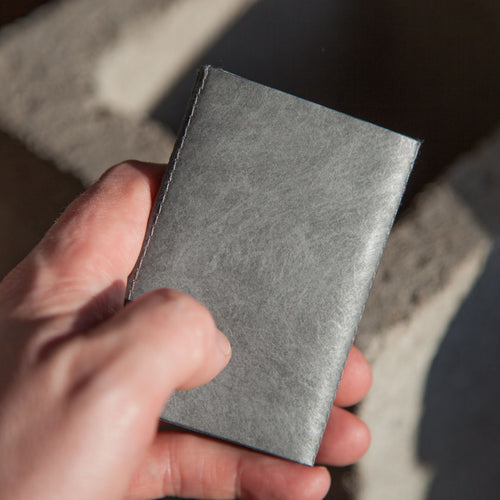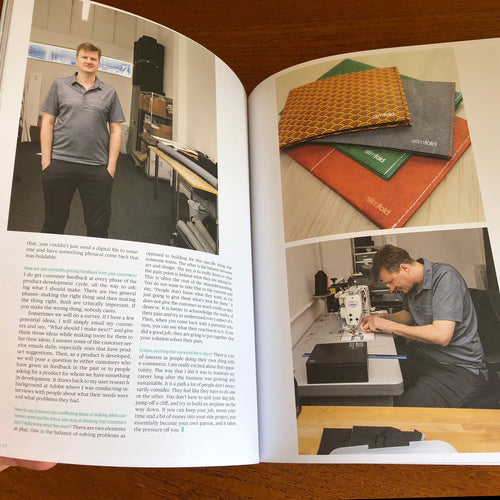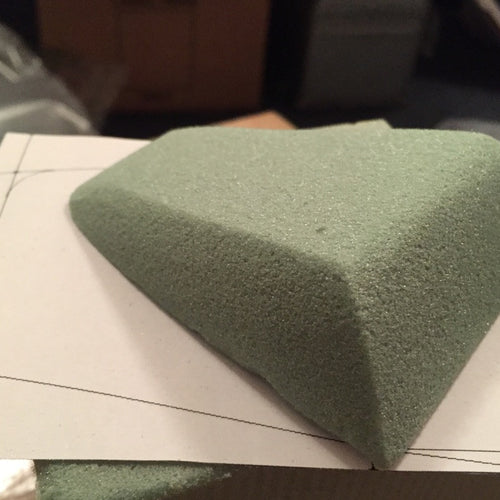I first met Eric a little over a year ago shortly after my Kickstarter campaign for the Tyvek SlimFold MICRO. It turned out he was a user of the Tyvek SlimFold Original and had been following the Kickstarter as well. We had a great brunch and he gave me some advice for running the Kickstarter and other general business stuff.
I met with Eric again a few weeks ago and based on how relaxed he was, I would have never guessed he was right on the verge of launching a record-breaking project. (In case you haven't heard, they raised $5m in about 5 hours and are now over $11m.) We walked through their sprawling Palo Alto office which now houses about 130 folks passionate about bringing new products to life. If you watch his video, that really shows through. These guys are the real deal… but they are battling against Apple and Samsung. Despite the odds, they have carved out a niche of usefulness and value combined with a direct customer relationship. Their existence is a delicate one in this corporate-dominated consumer product world, but they are perhaps a model for how it is possible for an independent brand to scale, leverage the benefits that size provides, and feed that value back to their supporters.
Some in the comment threads of Kickstarter have questioned why Pebble returned to run their campaign there. I can understand how some may feel that it’s against the spirit of Kickstarter. They may feel that Kicksterter is there for “the little guy” to get off the ground… and that big projects like this crowd them out. But big projects like these also introduce Kickstarter to a lot of first-time users, thereby broadening the community. As people become familiar with it and browse around, they may be inclined to back additional projects that catch their eye.
Others seem to feel that Pebble should have “graduated” from Kickstarter since they already did their first project and are a “real" company now. But for a company that makes consumer electronics, they are still tiny- especially compared with their competitors. I have worked on projects with Samsung before and they have a whole department dedicated to reverse-engineering hardware. They will take the Pebble Time apart as soon as they get their hands on one (if they haven’t already). Needless to say, Apple is no joke either. As a business owner (at a much smaller scale), the benefits to using Kickstarter go well beyond the money raised. Here are a few additional benefits to consider:
- Risk, inventory, and supply chain management. It would have been difficult for Pebble to predict how quickly this model would sell if they waited to put it on the shelves of stores before selling it. Would it take close to 30 days to reach 50,000 backers like last time? Or 2 days like this time? I think it’s safe to say that even Pebble was blown away by the response… and they can take proactive steps to double or triple their factory orders NOW. This is a huge benefit to a small company because you don’t want to be sold out (a problem I’ve had a lot) but you don’t want to make too many either.
- Direct customer involvement. Building on their first Kickstarter, they were able to use that fan base and trust to get more support for this model. And that momentum can continue to grow for future models. They can gather input for new features feedback on product performance in a way that is much more direct than other avenues like focus groups. Based on the response to this second model, they really took to heart what their core base of users was asking for and hit it out of the park.
- Valuation and cash flow. Even if a large wholesaler were to give Pebble a purchase order for 50,000 units, Pebble would need to finance the production of those watches. Even if they had the cash reserves to cover it, that would mean they couldn’t spend that cash on other things like R&D towards their next product. Obviously making $10m in a day never hurt the cash flow of any business. But a success like this provides a double-lift. First, they didn’t need to give up any equity to get this money or pay any interest to borrow it in order to finance production. Second, and perhaps more importantly, the market has directly demonstrated their desire for the product. I’m no venture capital expert but it’s pretty clear that they if they do need additional funding at some point, they would get a much better valuation going forward than they would have before this Kickstarter.
The last point I’ll make is that some commenters seem frustrated that the product was almost done by the time they launched their Kickstarter… so they don’t have the opportunity to shape the product according to their requests. While I understand that some backers may enjoy the process of working with the creator as they figure out the details of the design, Kickstarter is available to project creators no matter what their stage of development. If those backers prefer early-stage projects, there are plenty of them out there… but they are also much more likely to be delayed or never deliver a product at all. To ship a product like this shortly after the project finishes is an immense logistical challenge. If there were to be even small tweaks at this stage of hardware development, the schedule would likely need to be pushed out significantly and a lot of folks would be upset.
The fact that Pebble went back to Kickstarter doesn’t leave the least bit of a bad taste in my mouth. Just the opposite. it serves as yet another example that a company can start with Kickstarter backing and continue to grow. I do think it presents a challenge to Kickstarter to make sure that smaller projects can get found on their site. That is a solvable design problem though and I hope businesses of all sizes can continue to connect directly with their customers through Kickstarter or other means in order to make better products.






Just like Adam I just found your wallet through Pebble’s supported Kickstarter projects. I’m looking forward to getting it in the mail.
@Adam – thanks so much for sharing that! I’m so pleased to hear it. Enjoy your SlimFold!
Dear Dave,
loved your post. I just wanted to prove your point by telling you that I found out about your slimfoldwallet while looking at what Projects Pebble Time was following – on Kickstarter!
Cheers,
Adam